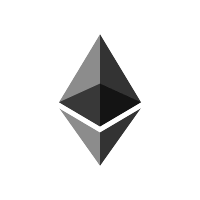Ethereum saw an outflow of 3.6 billion dollars in the first quarter. Where did the money go?
Written by: Michael Nadeau
Compiled by: Luffy, Foresight News
People say that investment should follow smart money, and the beauty of public blockchains is that we can easily do this by leveraging on-chain data.
As the infrastructure connecting blockchains improves, the network effects and economic moats within any single network may become increasingly difficult to achieve. Therefore, we have been studying the net capital flows of the top 15 L1 and L2 to accurately reveal the direction of value flow within public blockchain networks, and now it's time to share our findings with you.
Which blockchains have the largest net inflows?
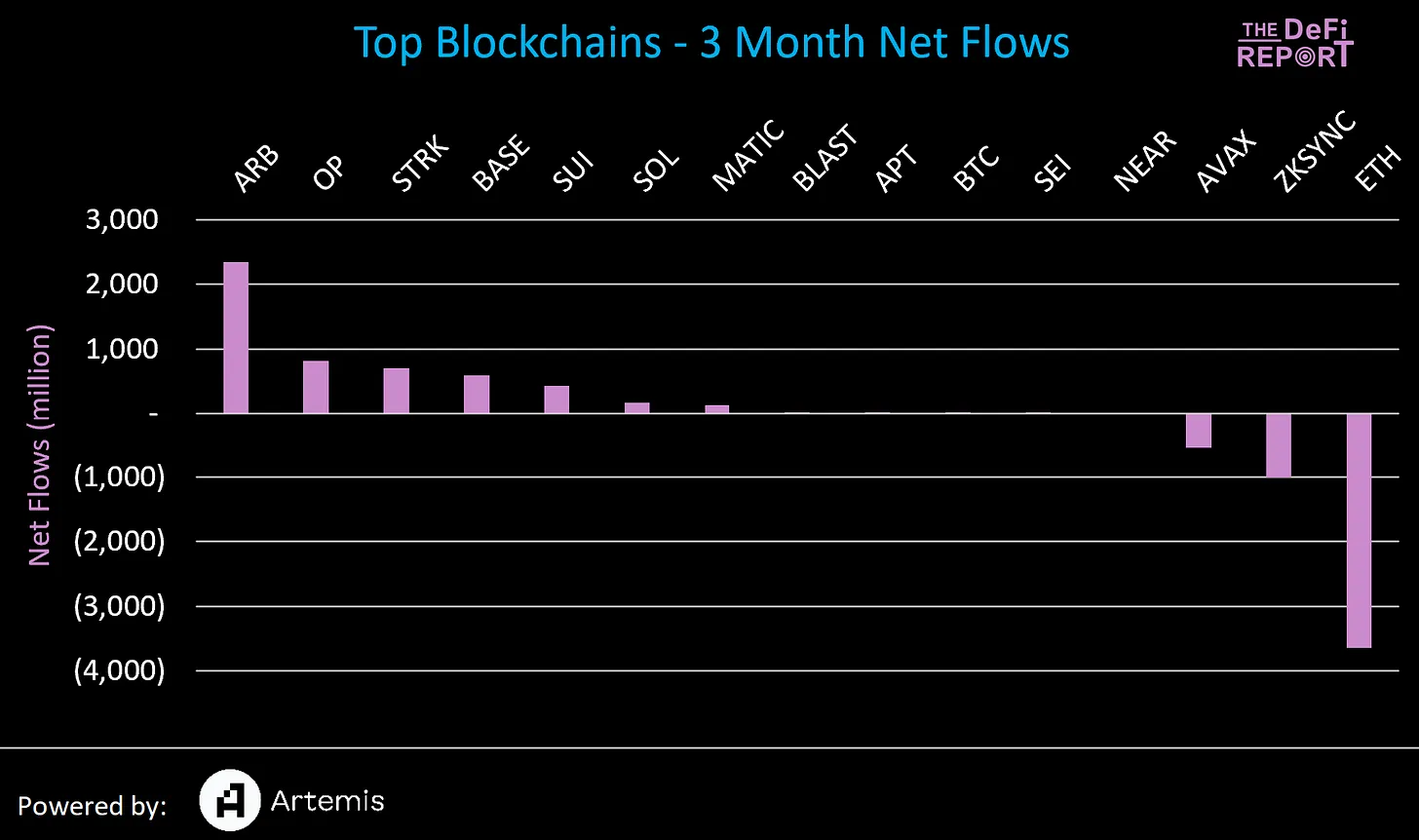
Winners:
- We can see that Arbitrum is the biggest winner. Over the past 3 months, Arbitrum has received more than $2.3 billion in net inflows from other blockchains.
- Optimism ranks second, with nearly $800 million in net inflows during the same period.
- StarkWare comes in third with over $700 million in net inflows.
- Base ranks fourth, with nearly $600 million in net inflows over the past 3 months.
- Finally, Sui ranks fifth with $423 million in inflows and is the only non-EVM chain to see significant inflows in the past 90 days.
Losers:
- Over the past 90 days, Ethereum has seen a net outflow of over $3.6 billion. During the same period, more than $4.4 billion flowed into the Ethereum ecosystem via L2. L2 pays settlement fees to ETH L1, so this money has not actually left Ethereum.
- Over the past 3 months, zkSync has seen outflows of over $1 billion.
- Avalanche has seen over $500 million exit its ecosystem.
Where do Arbitrum's net inflows come from?
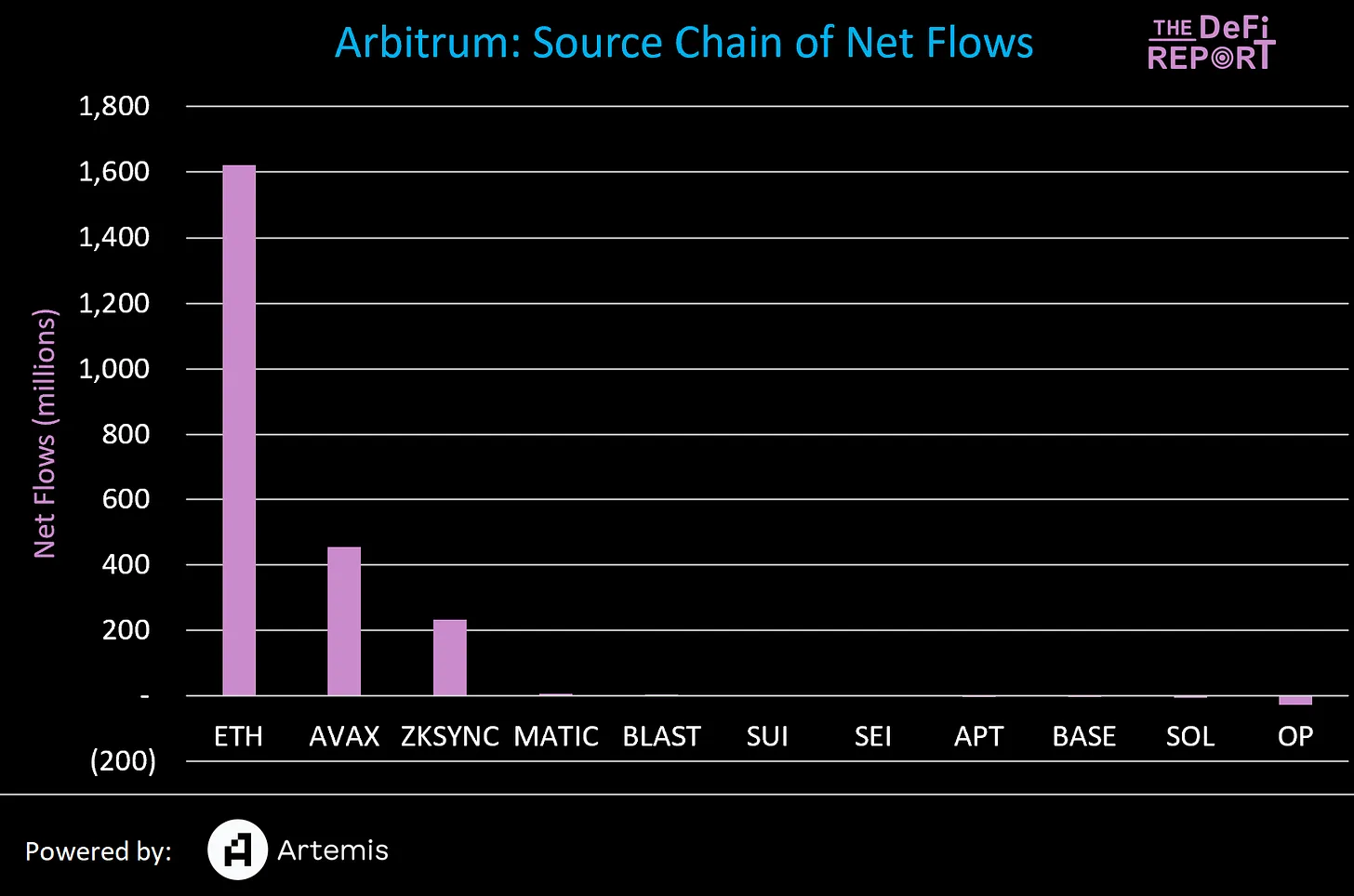
We can see that the vast majority of Arbitrum's inflows (70%) come from Ethereum L1. About 25% of the inflows are stablecoins, while other tokens account for 75%. We expect funds to continue flowing out of Ethereum L1 and into the most popular L2s.
Interestingly, nearly $500 million has left the Avalanche ecosystem and flowed into Arbitrum. If we revisit the first chart, Avalanche is one of the biggest losers in this group, with $543 million leaving its ecosystem last quarter, 84% of which flowed into Arbitrum.
Which projects on Arbitrum are capturing these inflows?
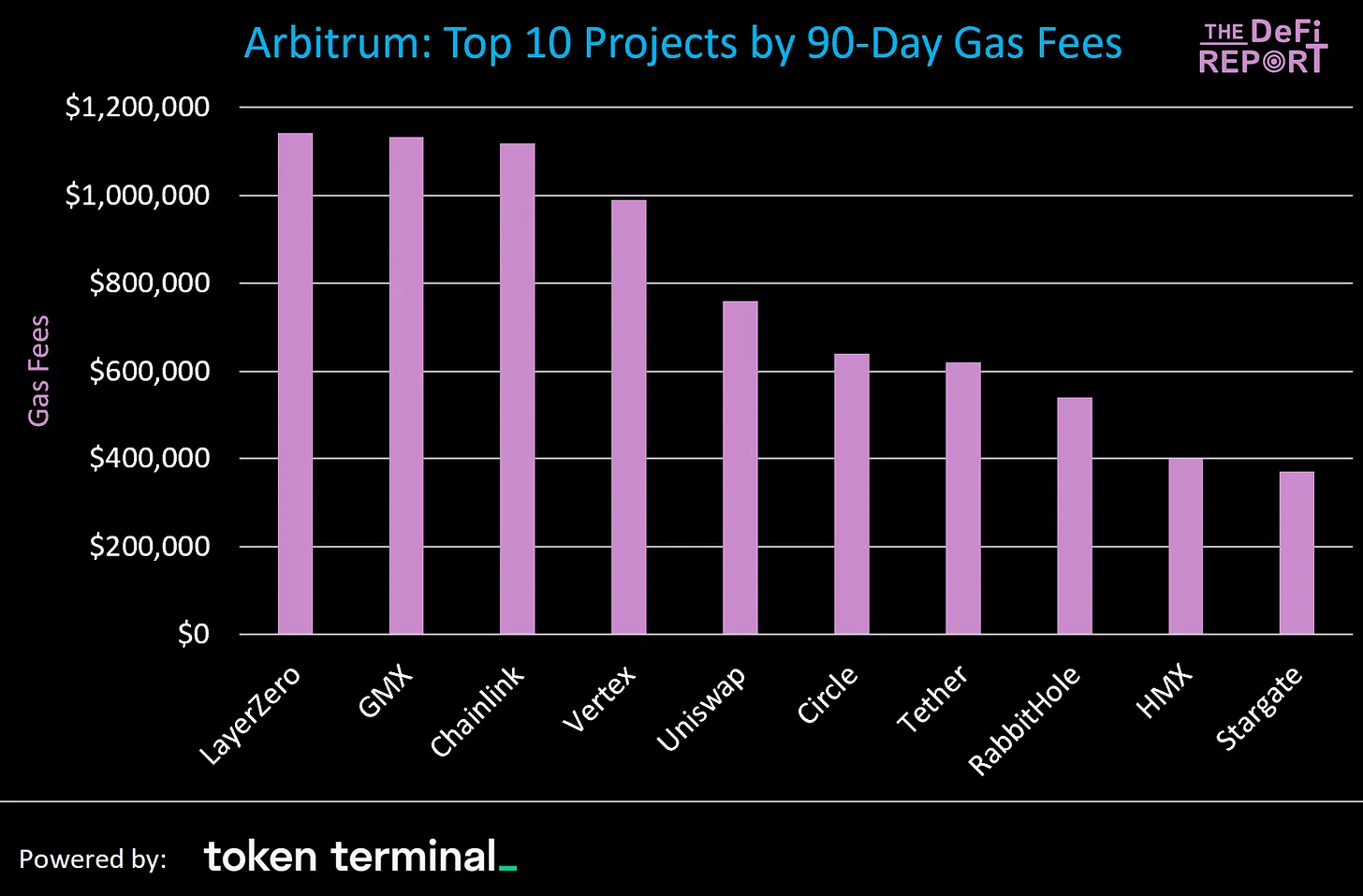
We cannot definitively say which projects on Arbitrum are capturing these inflows, but the projects mentioned above accounted for the most Gas consumption on Arbitrum over the past quarter.
When we observe the 90-day trend, RabbitHole (a game) stands out, as its Gas consumption increased by 1,147% over the past quarter.
Another interesting observation about Arbitrum is that Pyth Network (the leading data oracle within Solana) saw its Gas consumption increase by 600% after supporting Arbitrum in the past quarter.
Blockchains with the most outflows
We have talked about Avalanche, and in addition, zkSync (Ethereum L2) has seen outflows of over $1 billion in the past 90 days. Where did this money go?
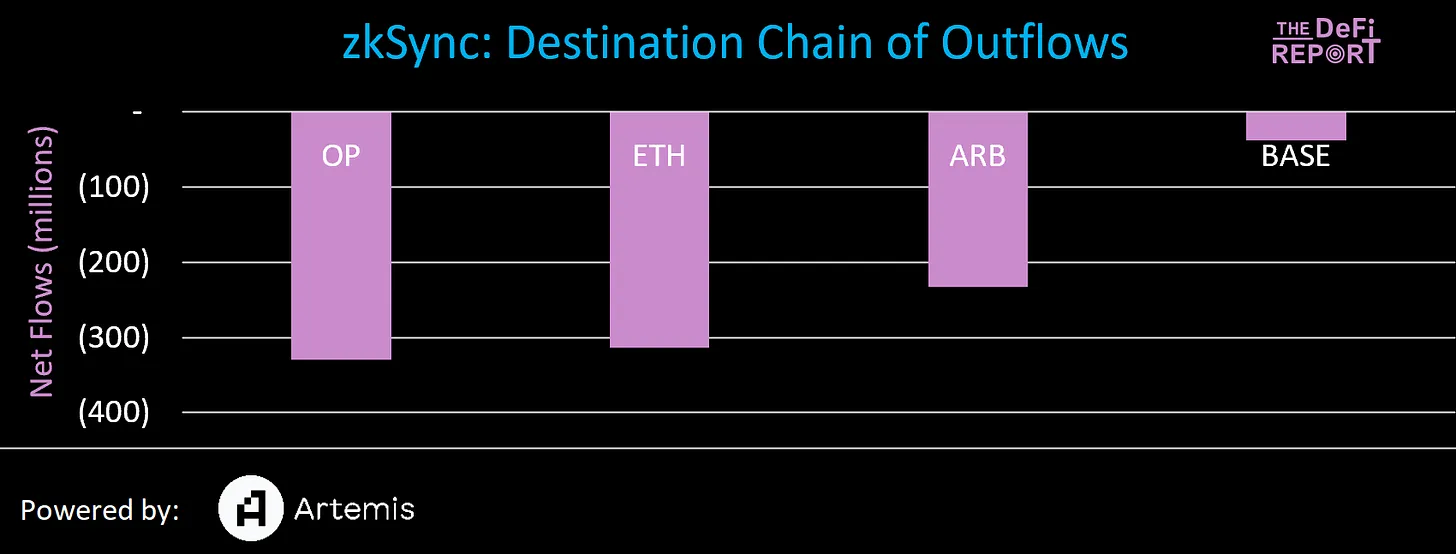
- $328 million flowed into Optimism
- $313 million flowed into Ethereum
- $232 million flowed into Arbitrum
- $37 million flowed into Base
Key point: All funds that flowed out of zkSync remained within the Ethereum ecosystem.
So what about Ethereum? We know that Arbitrum received $1.6 billion from Ethereum, but where did the rest of the funds go?
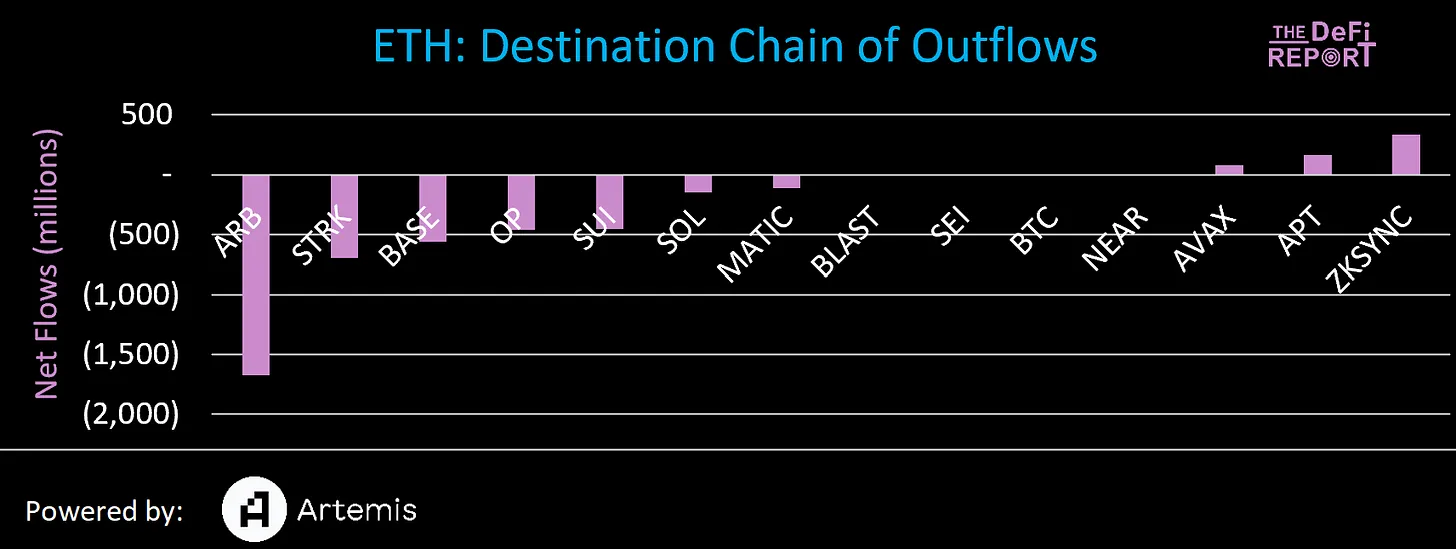
The vast majority of Ethereum's net outflows also remained within the Ethereum ecosystem, flowing into Starknet, Base, and Optimism.
Sui is the largest non-EVM beneficiary of Ethereum's outflows, receiving $452 million. Additionally, Solana received $152 million in inflows from Ethereum.
Summary of Key Points
As public blockchain networks mature, we expect the amount of capital in the tech stack to rise.
We also anticipate that eventually, there will be 3-5 major L1s (and possibly a series of less significant L1 blockchains).
However, as cross-chain infrastructure and account abstraction mature, we expect value to flow freely across various networks and ecosystems, making it more challenging to achieve unassailable network effects and economic moats.
That said, we have drawn some key conclusions by analyzing capital flows among major L1s and L2s.
Ethereum
The largest L1 has seen a significant outflow of funds, but it has rebounded at the L2 level. In my view, this is beneficial for Ethereum. If we were to see funds leaving L1 and not flowing into L2, but rather completely exiting the Ethereum ecosystem, that would be a dangerous signal. It is important to note that we do not see this happening today.
Moreover, despite over $3 billion in outflows, Ethereum's TVL has still increased by 60% over the past 3 months. This highlights the flaws of TVL as a KPI (the underlying asset prices are highly volatile and easily manipulated).
Solana
Over the past 3 months, Solana's net inflow among the 15 largest L1s and L2s was only $169 million. During the same period, Solana's TVL grew from $1.4 billion to $4.5 billion (an increase of 221%).
So how did this happen?
- Over the past 3 months, the price of SOL rose from $100 to $171 (an increase of 77%).
- An increasing amount of SOL has been added to liquid staking solutions (Marinade, Jito, BlazeStake).
- Several projects within the Solana ecosystem issued tokens, such as Jito, Pyth, Jupiter, and Tensor. These projects generated billions of dollars in wealth, some of which remained in Solana DeFi.
- For months, Memecoins on Solana have been in a frenzy, with increasing trading volumes and "value locked."
The growth of Solana's TVL is largely due to organic growth within the ecosystem.
Sui
Sui is the biggest winner among the new era of "high throughput" blockchains. It has received $423 million in net inflows, the vast majority of which came from Ethereum. This seems to be the main catalyst driving Sui's TVL from $220 million to today's $660 million.
Cross-chain Bridges
As mentioned above, with the maturation of cross-chain infrastructure, the flow of value across various networks may accelerate, pushing value out of any specific L1 and potentially flowing into the cross-chain bridges themselves. It is important to clarify that we have not yet seen this happening, but we are monitoring it.
Wormhole is one of the largest cross-chain bridges today. It provides interoperability between Solana, Ethereum, Arbitrum, BNB, Avalanche, Optimism, Near, and Polygon. The team recently launched a token, with an FDV that once exceeded $10 billion. This figure is close to that of Ethereum L2, which is a strong and noteworthy market signal for cross-chain infrastructure.






